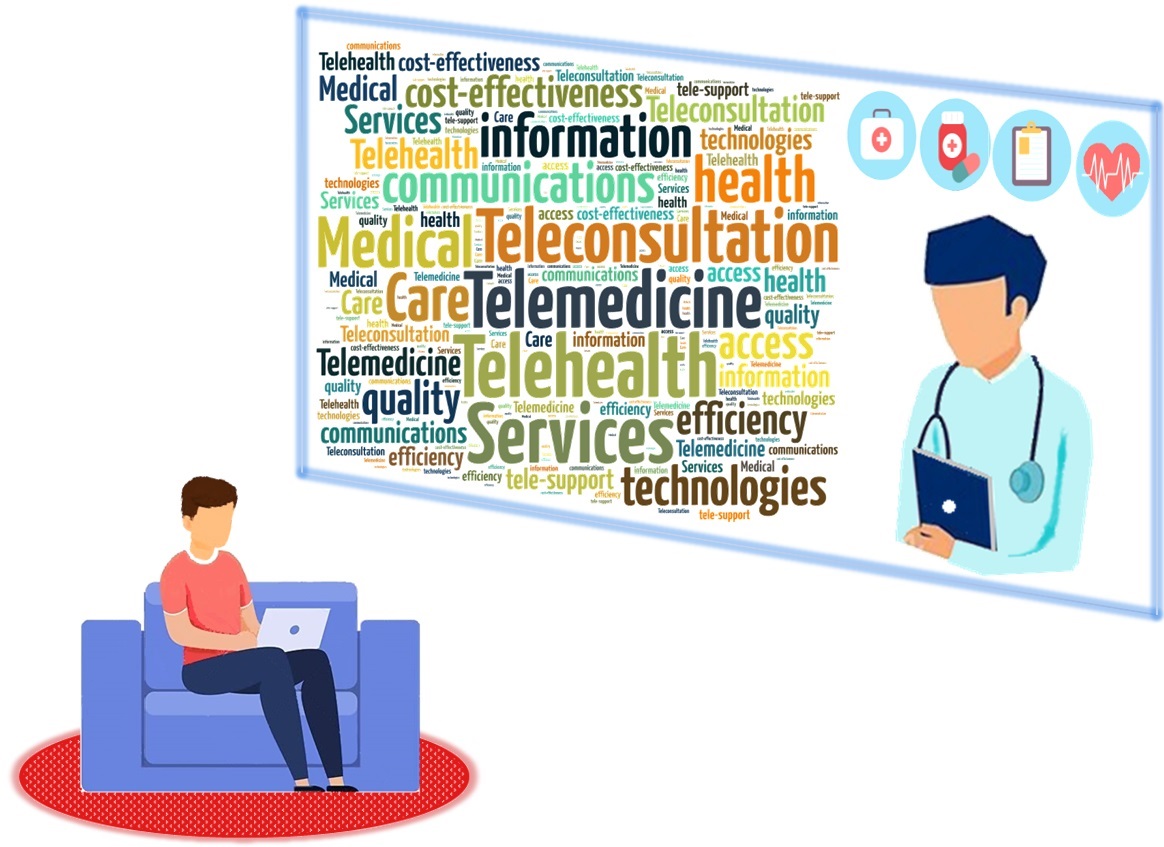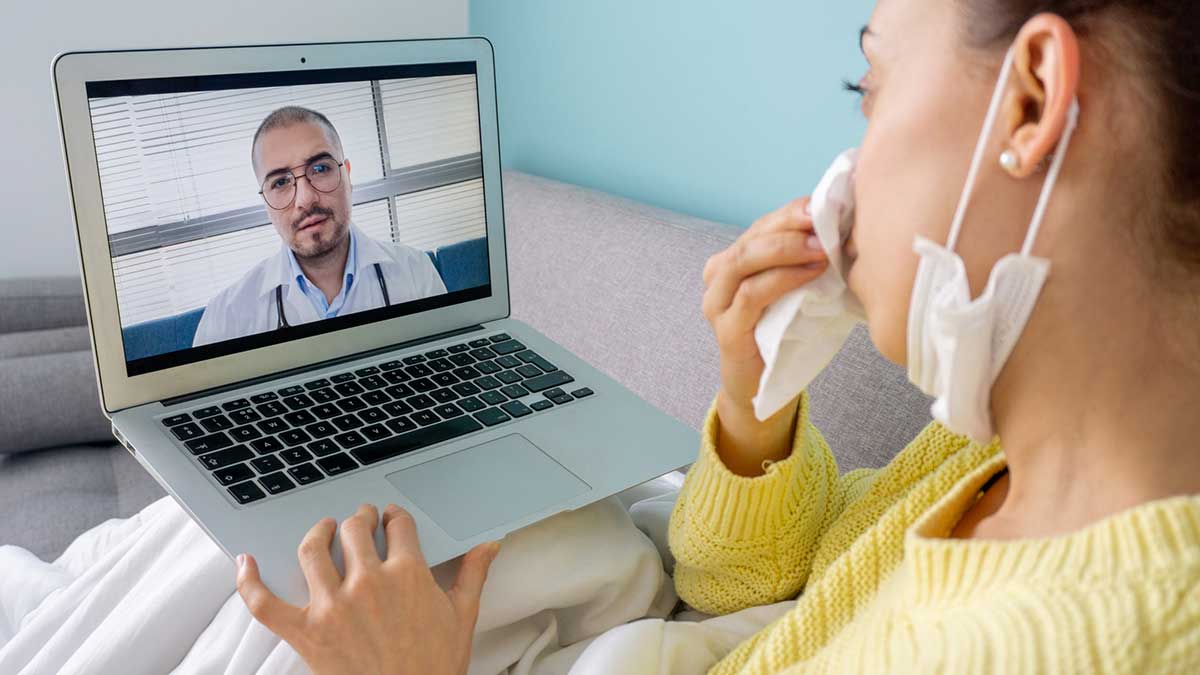10 Facts About the Rise of Telemedicine in Singapore

No Time to Read? Here’s a Snappy Summary of This Article
- Healthcare Revolution: Telemedicine is transforming Singapore’s healthcare, offering convenient virtual consultations and reducing the burden on hospitals.
- Pandemic Catalyst: The COVID-19 pandemic accelerated telemedicine adoption, making it a crucial tool for remote diagnosis and treatment.
- Government Support: Singapore’s government actively promotes telehealth initiatives, ensuring high-quality, accessible healthcare for all citizens.
- Technology Integration: Advanced technologies like AI and IoT are enhancing telemedicine, providing accurate diagnostics and personalized treatment options.
- Elderly Inclusion: Telemedicine is bridging the generation gap, catering to Singapore’s aging population with user-friendly platforms and devices.
- Future Expansion: The telemedicine landscape in Singapore continues to evolve, with startups and established healthcare providers collaborating for better patient outcomes.
Table of Contents
- No Time to Read? Here’s a Snappy Summary of This Article
- 1. Fact 1: Singapore has a supportive regulatory framework for telemedicine
- 2. Fact 2: Singapore has a vibrant telemedicine ecosystem with various players
- 3. Fact 3: Singapore has seen a surge in telemedicine usage during the COVID-19 pandemic
- 4. Fact 4: Singapore has implemented several initiatives to promote telemedicine adoption
- 5. Fact 5: Singapore has a high potential for telemedicine growth
- 6. Fact 6: Singapore has a strong telemedicine research and innovation culture
- 7. Fact 7: Singapore has a supportive telemedicine community and ecosystem
- 8. Fact 8: Singapore has a high demand for telemedicine services
- 9. Fact 9: Singapore has a high satisfaction rate for telemedicine services
- 10. Fact 10: Singapore has a bright future for telemedicine development
- Meanwhile, Check Out Tropika Club’s Ecosystem of Websites
Introduction
Telemedicine is not a new concept, but it has gained more prominence and popularity in recent years, especially during the COVID-19 pandemic. Telemedicine refers to the use of telecommunications technology, such as phone calls, video chats, or mobile apps, to deliver healthcare services over a distance. This can include consultation, diagnosis, treatment, prescription, and monitoring of patients’ conditions. Telemedicine can offer many benefits for both patients and doctors, such as convenience, accessibility, cost-effectiveness, and safety. In this article, we will explore 10 facts about the rise of telemedicine in Singapore and how it is transforming the healthcare landscape in the country.

1. Fact 1: Singapore has a supportive regulatory framework for telemedicine
The Singapore government has been supportive of telemedicine as a way to enhance the quality and efficiency of healthcare delivery in the country. The Ministry of Health (MOH) has issued guidelines and standards for telemedicine providers to ensure patient safety and quality of care. The MOH also regulates the licensing and registration of telemedicine providers under the Healthcare Services Act. The Singapore Medical Council (SMC) and the Singapore Dental Council (SDC) have also issued ethical codes and professional guidelines for doctors and dentists who practice telemedicine. These codes and guidelines cover issues such as informed consent, confidentiality, record-keeping, and prescribing practices.

2. Fact 2: Singapore has a vibrant telemedicine ecosystem with various players
Singapore has a diverse and dynamic telemedicine ecosystem with various players from different sectors. These include public healthcare institutions, private healthcare providers, technology companies, startups, and research institutes. Some examples of public healthcare institutions that offer telemedicine services are SingHealth Polyclinics, National University Hospital, and Tan Tock Seng Hospital. Some examples of private healthcare providers that offer telemedicine services are Raffles Medical Group, Doctor Anywhere, and WhiteCoat. Some examples of technology companies that provide telemedicine platforms are MyDoc, Doctor World, and Speedoc. Some examples of startups that are innovating in the telemedicine space are HiDoc, Jaga-Me, and Biofourmis. Some examples of research institutes that are conducting studies on telemedicine are Nanyang Technological University, the National University of Singapore, and the Agency for Science, Technology, and Research.

3. Fact 3: Singapore has seen a surge in telemedicine usage during the COVID-19 pandemic
The COVID-19 pandemic has accelerated the adoption and acceptance of telemedicine in Singapore. According to a survey by Doctor Anywhere, a leading telemedicine provider in Singapore, the number of users on its platform increased by more than 500% from January to April 2020. The survey also found that 70% of respondents said they would continue to use telemedicine even after the pandemic is over. The MOH also encouraged people with mild flu-like symptoms to seek medical help via teleconsultation and utilise telemedicine and/or antigen rapid test (ART) services to reduce the risk of transmission. The MOH also subsidised the cost of teleconsultation and ART for eligible individuals under certain protocols.

4. Fact 4: Singapore has implemented several initiatives to promote telemedicine adoption
The Singapore government has implemented several initiatives to promote telemedicine adoption among both patients and doctors. One such initiative is the National Telemedicine Guidelines (NTG), which was launched in 2015 by the MOH. The NTG provides a common framework and reference for telemedicine providers to ensure quality and safety standards. Another initiative is the Regulatory Sandbox for Telemedicine, which was launched in 2018 by the MOH. The sandbox allows selected telemedicine providers to operate under relaxed regulatory requirements for a limited period of time while collecting data and feedback from users. A third initiative is the National Digital Health Strategy (NDHS), which was launched in 2018 by the MOH. The NDHS aims to harness digital technologies to empower people to take charge of their own health, enable healthcare professionals to deliver better care, and improve health outcomes for all. One of the key components of the NDHS is the National Electronic Health Record (NEHR), which is a secure system that allows authorized healthcare providers to access and share patients’ medical records across different settings.

5. Fact 5: Singapore has a high potential for telemedicine growth
Singapore has a high potential for telemedicine growth due to several factors. One factor is the aging population, which is expected to increase from 15.2% in 2020 to 25.9% in 2030. This means that there will be more elderly people who may have chronic conditions or mobility issues that require regular medical attention. Telemedicine can help them access healthcare services conveniently and comfortably from their homes. Another factor is the urbanization, which is expected to increase from 100% in 2020 to 100.8% in 2030. This means that there will be more people living in densely populated areas that may face traffic congestion, long waiting times, or limited availability of healthcare facilities. Telemedicine can help them save time and money by avoiding unnecessary travel and hassle. A third factor is the digitalization, which is expected to increase from 88% in 2020 to 93% in 2025. This means that there will be more people who are familiar with and comfortable using digital devices and platforms for various purposes. Telemedicine can help them leverage the power of technology to enhance their health and wellness.

6. Fact 6: Singapore has a strong telemedicine research and innovation culture
Singapore has a strong telemedicine research and innovation culture that supports the development and advancement of telemedicine solutions. The government has invested heavily in research and development (R&D) in the healthcare sector, with a budget of S$4 billion for the period of 2016 to 2020. The government has also established several research institutes and centres that focus on telemedicine, such as the Centre for Healthcare Innovation (CHI), the Centre for Healthcare Assistive and Robotics Technology (CHART), and the Centre for Digital Health Interventions (CDHI). These institutes and centres conduct cutting-edge research on topics such as tele-rehabilitation, tele-monitoring, tele-education, and tele-psychiatry. They also collaborate with industry partners and healthcare providers to test and implement their innovations in real-world settings.
_
Read Also:
Top 10 Best Aesthetic Clinics in West Singapore
_

7. Fact 7: Singapore has a supportive telemedicine community and ecosystem
Singapore has a supportive telemedicine community and ecosystem that fosters collaboration and learning among different stakeholders. There are several associations and networks that bring together telemedicine providers, users, researchers, regulators, and policymakers, such as the Telemedicine Society of Singapore (TMSS), the Asia Pacific Association for Medical Informatics (APAMI), and the International Society for Telemedicine & eHealth (ISfTeH). These associations and networks organise events, workshops, webinars, conferences, and publications to share best practices, insights, challenges, and opportunities in telemedicine. They also advocate for the interests and needs of the telemedicine community and ecosystem at the national and international levels.

8. Fact 8: Singapore has a high demand for telemedicine services
Singapore has a high demand for telemedicine services due to several reasons. One reason is the convenience factor, which allows patients to access healthcare services anytime and anywhere without having to travel or wait. According to a survey by Doctor Anywhere, 80% of respondents said they used telemedicine because it was convenient. Another reason is the cost factor, which allows patients to save money on transportation, consultation fees, or medication. According to a survey by MyDoc, a leading telemedicine platform in Singapore, users saved an average of S$32 per consultation compared to visiting a clinic. A third reason is the safety factor, which allows patients to avoid exposure to infectious diseases or other health risks. According to a survey by WhiteCoat, another leading telemedicine provider in Singapore, 77% of respondents said they used telemedicine because it was safer during the COVID-19 pandemic.

9. Fact 9: Singapore has a high satisfaction rate for telemedicine services
Singapore has a high satisfaction rate for telemedicine services among both patients and doctors. According to a survey by Doctor Anywhere, 95% of respondents said they were satisfied with their teleconsultation experience. The survey also found that 92% of respondents said they trusted their online doctor as much as their regular doctor. According to a survey by MyDoc, 98% of users said they would recommend MyDoc to their friends or family. The survey also found that 97% of users said they were satisfied with the quality of care they received from MyDoc. According to a survey by WhiteCoat, 96% of respondents said they were satisfied with their overall experience with WhiteCoat. The survey also found that 94% of respondents said they felt comfortable talking to their online doctor.

10. Fact 10: Singapore has a bright future for telemedicine development
Singapore has a bright future for telemedicine development as it continues to embrace digital transformation and innovation in the healthcare sector. The government has announced several plans and initiatives to further support and enhance telemedicine services in the country. One such plan is the Healthcare Industry Transformation Map (ITM), which was launched in 2017 by the MOH. The ITM aims to develop new care models that leverage technology to deliver patient-centric and value-based care. One of the key strategies under the ITM is to scale up telehealth solutions across different care settings. Another initiative is the National Artificial Intelligence Strategy (NAIS), which was launched in 2019 by the Smart Nation and Digital Government Office (SNDGO). The NAIS aims to harness artificial intelligence (AI) to address national challenges and create social and economic value.
Conclusion
Telemedicine is a rapidly growing and evolving field that offers many benefits for both patients and doctors in Singapore. Telemedicine can provide convenience, accessibility, cost-effectiveness, and safety for healthcare services delivered over a distance. Singapore has a supportive regulatory framework, a vibrant telemedicine ecosystem, a high potential for telemedicine growth, a strong telemedicine research and innovation culture, a supportive telemedicine community and ecosystem, a high demand for telemedicine services, a high satisfaction rate for telemedicine services, and a bright future for telemedicine development. Telemedicine is transforming the healthcare landscape in Singapore and creating new opportunities and challenges for both patients and doctors. Telemedicine is not a replacement for face-to-face care, but a complement that can enhance the quality and efficiency of healthcare delivery in the country.

Frequently Asked Questions (FAQ)
Q: Is telemedicine covered by insurance in Singapore?
A: Insurance coverage for telemedicine in Singapore varies, but many policies now include it. Check with your insurer for specifics.
Q: Can I get a prescription through telemedicine in Singapore?
A: Yes, doctors in Singapore can issue e-prescriptions through telemedicine for certain medications.
Q: Are there age restrictions for using telemedicine services in Singapore?
A: Generally, there are no age restrictions, and telemedicine platforms are designed to be user-friendly for all age groups.
Q: How do I choose a reliable telemedicine platform in Singapore?
A: Look for platforms with Ministry of Health (MOH) approval or partnerships with established healthcare providers for reliability.
Q: Is my medical information secure during a telemedicine consultation?
A: Yes, telemedicine platforms in Singapore prioritize patient data security and comply with strict privacy regulations.
Q: What if I need a physical examination? Can telemedicine help?
A: Telemedicine can provide initial assessments and advice. If a physical examination is necessary, your telehealth provider will guide you to a clinic or hospital.

Have an Article to Suggest?
Tropika Club is always looking for new and exciting content to feature in their magazine and they value the input of our readers. If you have any noteworthy content or articles that you believe would be a great addition to Tropika Club’s magazine, we are open to suggestions and encourage you to reach out to us via email at [email protected]. By doing so, Tropika Club values your expertise and knowledge in the matter and appreciates your willingness to help. We will review your recommendations and update our list accordingly
Meanwhile, Check Out Tropika Club’s Ecosystem of Websites

Tropika Club Magazine – Tropika Club Magazine is a Singapore-based publication that features articles on a wide range of topics with a focus on local businesses and content for the region. The magazine emphasizes supporting local businesses through its #SupportLocal initiative, which includes coverage of everything from neighborhood hawker stalls to aesthetic clinics in town. In addition to highlighting local businesses, Tropika Club Magazine also covers a variety of local content, including beauty, lifestyle, places, eats, and what’s on in Singapore and the Asia Pacific region.
Tropika Club Deals – Tropika Club Deals is a leading online deals and voucher shopping site in Singapore, offering amazing discounts on beauty, wellness, and fitness products and services. It’s the perfect platform for customers who want to discover the best deals without having to commit to a specific appointment date and time. These deals are available at major beauty stores, facial salons, hair salons, and other brands in Singapore, with no minimum spend required. Choose from guaranteed discounted deals in the categories of hairstyling, hair removal, facial & aesthetics, body slimming, brows & lashes, nails & makeup, massage & spa or fitness & wellness. Tropika Club Deals is also ideal for customers who want to buy vouchers as gifts or to use for the future. So whether you’re looking to save money on your next haircut or want to treat yourself to a relaxing massage, Tropika Club Deals has got you covered with the best voucher and coupon deals in Singapore!




